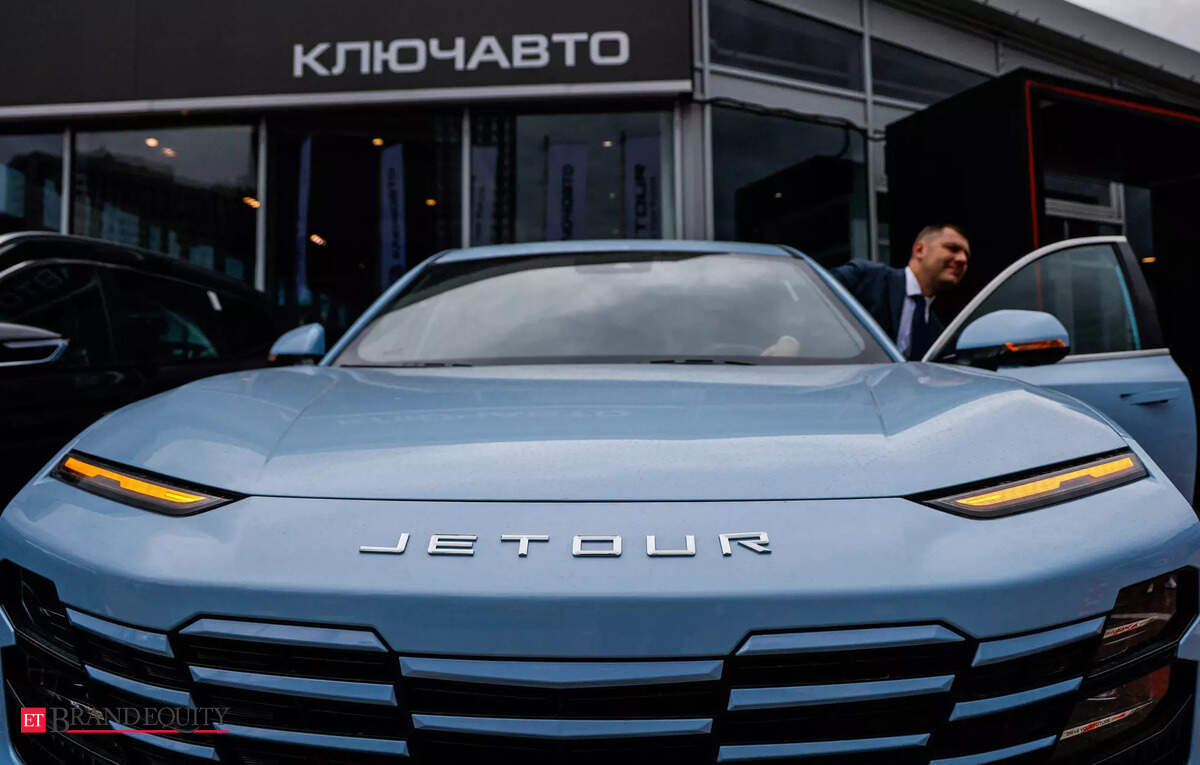Growth Strategies For International Automakers In China: Learning From BMW And Porsche's Experiences

Table of Contents
Mastering Localization: Adapting to the Chinese Market
Successfully entering the Chinese automotive market requires more than just translating marketing materials; it demands a deep understanding of and adaptation to local preferences and regulations. This is where localization strategies become critical for international automakers.
Understanding Consumer Preferences
Chinese consumers have unique preferences regarding vehicle features, styling, and technology. Successful brands like BMW and Porsche understand and cater to these preferences to build brand loyalty and drive sales.
- Preference for SUVs and Electric Vehicles: The Chinese market shows a strong preference for SUVs, dominating sales figures. The demand for electric vehicles (EVs) is also rapidly expanding, driven by government incentives and environmental concerns.
- Emphasis on Technological Advancements: Chinese consumers highly value advanced technology features, including driver-assistance systems, infotainment systems, and connectivity options.
- Strong Brand Loyalty: While brand loyalty exists, it's often more fluid than in some Western markets. Therefore, consistent quality and innovative offerings are essential to maintaining customer relationships.
- Growing Demand for Luxury Vehicles: The burgeoning middle class fuels substantial growth in the luxury vehicle segment, presenting a lucrative market for premium brands like BMW and Porsche.
BMW's successful introduction of long-wheelbase versions of its sedans, tailored to Chinese preferences for extra rear-seat legroom, is a prime example of effective localization. Similarly, Porsche's focus on offering a range of SUVs alongside its iconic sports cars directly addresses the high demand for this vehicle type in China.
Building a Strong Local Network
Establishing a robust dealership network and providing top-notch after-sales service is fundamental to building trust and ensuring customer satisfaction in China.
- Strategic Partnerships with Local Dealers: Collaborating with experienced local dealers provides invaluable market knowledge and access to established distribution channels.
- Investment in Service Infrastructure: A comprehensive service network, including readily available parts and skilled technicians, is essential for maintaining customer loyalty.
- Localized Training Programs for Staff: Investing in training programs that equip local staff with the necessary product knowledge and customer service skills is crucial.
Both BMW and Porsche have invested heavily in developing expansive dealer networks across China's diverse regions, ensuring convenient access to their products and services for customers nationwide. This commitment to a strong local presence has been instrumental in their success.
Navigating Regulatory Hurdles
China's automotive regulatory landscape is complex and stringent. International automakers must navigate emission standards, safety regulations, import tariffs, and government incentives for electric vehicles to succeed.
- Emission Standards: Meeting increasingly stringent emission standards is paramount.
- Safety Regulations: China has rigorous safety regulations that must be adhered to.
- Import Tariffs: Understanding and managing import tariffs is crucial for pricing strategies.
- Government Incentives for Electric Vehicles: Leveraging government incentives for EVs is essential for competitiveness in this growing market segment.
BMW and Porsche have effectively navigated these challenges through proactive engagement with regulatory bodies and strategic investments in compliance initiatives. This demonstrates the importance of understanding and adapting to the specific regulatory environment.
Effective Marketing and Branding in China
Successful marketing and branding in China require a deep understanding of the digital landscape and the cultural nuances of the market.
Leveraging Digital Marketing
China's highly developed digital landscape necessitates sophisticated online marketing strategies.
- Social Media Marketing (WeChat, Weibo): WeChat and Weibo are dominant social media platforms requiring targeted engagement strategies.
- Online Advertising: Utilizing various online advertising channels is essential for reaching target audiences.
- Influencer Marketing: Collaborating with key opinion leaders (KOLs) can significantly amplify brand messaging.
- E-commerce Integration: Integrating with major e-commerce platforms expands reach and sales opportunities.
BMW and Porsche have effectively leveraged digital marketing channels to connect with Chinese consumers, employing targeted campaigns on WeChat and Weibo and partnering with influential figures in the automotive industry.
Building Brand Loyalty Through Experiential Marketing
Creating engaging brand experiences is crucial for fostering customer loyalty in China.
- Sponsorship of Events: Sponsoring relevant events increases brand visibility and enhances brand image.
- Participation in Automotive Shows: Showcasing products at major automotive shows attracts potential customers.
- Exclusive Customer Events: Organizing exclusive events for existing customers strengthens relationships.
- Community Building Initiatives: Building a strong brand community cultivates loyalty and advocacy.
BMW and Porsche have invested in experiential marketing, hosting exclusive driving events, sponsoring prestigious events, and actively engaging with customers online and offline.
Communicating Brand Values Effectively
Adapting brand messaging to resonate with Chinese consumer values is critical for success.
- Focus on Prestige, Quality, Innovation, and Social Responsibility: Highlighting these values resonates with the aspirational nature of Chinese consumers.
- Understanding Cultural Nuances in Advertising: Marketing materials must be culturally sensitive and avoid potential misunderstandings.
Both BMW and Porsche have successfully adapted their brand messaging to resonate with the Chinese market, highlighting their commitment to quality, innovation, and prestige.
Innovation and Technological Advancements
Investing in research and development (R&D) and fostering strategic partnerships are crucial for maintaining a competitive edge in China's rapidly evolving automotive market.
Investing in R&D for the Chinese Market
Tailoring research and development efforts to meet the specific needs of the Chinese market is crucial for long-term success.
- Development of Electric Vehicles Tailored to Chinese Consumer Preferences: Offering EVs with features specifically designed for the Chinese market is vital.
- Focus on Connected Car Technologies: Developing advanced connected car technologies catering to local infrastructure and consumer needs is essential.
- Adapting to Local Infrastructure: Understanding and adapting to local infrastructure, such as charging networks for EVs, is important.
Both BMW and Porsche have invested significantly in R&D to develop vehicles and technologies tailored to the specific requirements of the Chinese market.
Collaboration and Partnerships
Collaborating with local technology companies and research institutions can accelerate innovation and market penetration.
- Joint Ventures: Forming joint ventures provides access to local expertise and resources.
- Technology Licensing Agreements: Licensing agreements can facilitate technology transfer and collaboration.
- Strategic Partnerships with Chinese Tech Firms: Partnering with leading Chinese tech firms provides access to cutting-edge technology and market insights.
BMW and Porsche have engaged in strategic collaborations and partnerships with Chinese tech companies to leverage their expertise and expand their technological capabilities within the Chinese market.
Conclusion
This article has examined the growth strategies employed by BMW and Porsche in the Chinese automotive market, revealing valuable insights for international automakers. Mastering localization, implementing effective marketing strategies, and investing in technological advancements are crucial for success. By learning from the experiences of these established players, international automakers can navigate the complexities of the Chinese market and achieve sustainable growth. To further explore these growth strategies for international automakers in China, consider conducting a thorough market analysis and developing a tailored strategy that incorporates the lessons learned from BMW and Porsche's successes. Don't hesitate to adapt and innovate – the Chinese automotive market rewards those who embrace change and understand its unique dynamics. Develop your own winning China automotive market entry strategy today!

Featured Posts
-
 Mlb Prediction Yankees At Tigers Under Analysis
May 31, 2025
Mlb Prediction Yankees At Tigers Under Analysis
May 31, 2025 -
 New Report Highlights Dangerous Climate Whiplash Impacts On Global Cities
May 31, 2025
New Report Highlights Dangerous Climate Whiplash Impacts On Global Cities
May 31, 2025 -
 1 9 Milliarden Dollar Sanofis Grosser Schritt Im Kampf Gegen Autoimmunerkrankungen
May 31, 2025
1 9 Milliarden Dollar Sanofis Grosser Schritt Im Kampf Gegen Autoimmunerkrankungen
May 31, 2025 -
 Detroit Tigers Vs New York Yankees Will The Under Hit
May 31, 2025
Detroit Tigers Vs New York Yankees Will The Under Hit
May 31, 2025 -
 Canada News Wildfires Continue To Threaten Eastern Manitoba
May 31, 2025
Canada News Wildfires Continue To Threaten Eastern Manitoba
May 31, 2025
